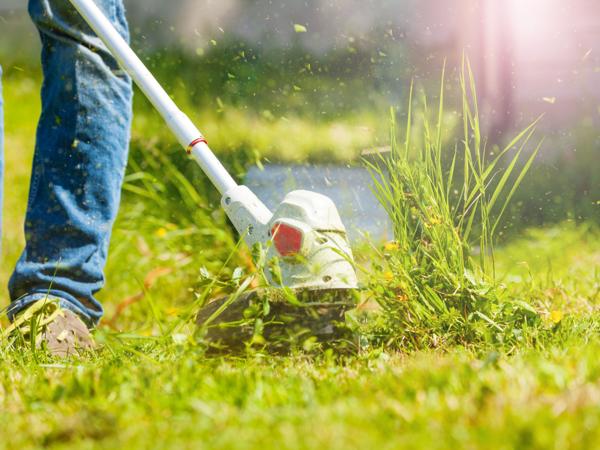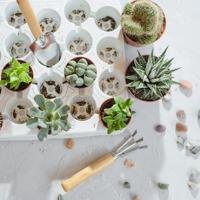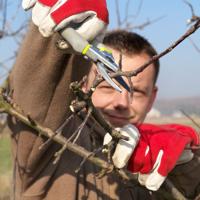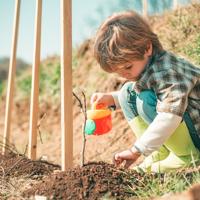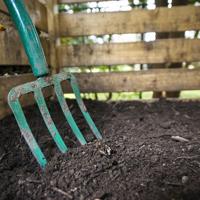Maintaining your garden tools in good condition can be an integral part of a sustainable gardening routine. Sharp tools make gardening easier and more enjoyable, while a dull blade can make tasks difficult, increase wear on your tools, and even pose a safety hazard. Here’s a guide to help you keep your garden tools sharp and effective.
Why Keep Tools Sharp?
Sharp tools cut cleanly and efficiently, reducing the stress on the plant. A clean cut allows the plant to heal more quickly, minimizing the risk of disease. Dull tools can rip or tear, leaving plants vulnerable to infection.
Not only do sharp tools protect your plants, but they also reduce the effort you need to exert when working in the garden. Whether you’re trimming branches or digging up soil, having a keen edge ensures a smoother, safer experience.
Gather the Necessary Tools
Before you start sharpening, you’ll need a few basic items. Here’s a convenient list:
- Sharpening stone or whetstone: Often used for smaller tools like pruners. These stones can vary in grit level. A medium or fine grit is recommended for most gardening tools.
- Mill file: Useful for larger tools, such as hoes, shovels, and spades.
- Metal file: It can also be used for a variety of tools, good for more precise work.
- Lubricating oil: This helps with the sharpening process and protects the blade from rust.
- Protective gear: Gloves and eye protection to ensure safety.
- Cleaning supplies: A wire brush or rag to clean dirt and rust from the tools.
Step-by-Step Sharpening Guide
Let’s walk through sharpening some common garden tools. While tools may differ slightly, these basic methods should apply.
Pruners and Shears
-
Clean the tool: Use a wire brush or rag to remove dirt and any rust. Dip in soapy water for persistent grime.
-
Secure the tool: Hold the pruner blade in place, making sure it’s stable and won’t move around as you sharpen it.
-
Choose the right angle: Look closely at the blade; you’ll notice it’s beveled. Follow the angle of this bevel as a guide.
-
Sharpen the blade: Use a whetstone or sharpening stone. Start at the base and move the stone across the blade in one direction, applying consistent pressure.
-
Flip and refine: Once the beveled edge is sharp, flip the blade over and slightly smooth any burrs on the flat side. A couple of light passes are usually sufficient.
-
Lubricate and finish: Wipe away any metal filings and apply a thin layer of oil to prevent rusting.
Shovels and Hoes
-
Clean and prepare the tool: As with pruners, clean off dirt and rust, and dry thoroughly to inspect the edge.
-
Stabilize the tool: Secure the shovel or hoe in a vice or between stable supports.
-
File the edge: Using a mill file, follow the existing angle on the blade. Work the file in a single direction – usually away from the body – and maintain even pressure.
-
Check the sharpness: The edge doesn’t need to be razor-sharp but should feel smooth. You might opt for a finer file or stone to touch up if needed.
-
Finish with a protective coat: Use light oil or protective spray to keep moisture and rust at bay.
Maintenance Tips
Once sharpened, regular maintenance is key to prolonging the sharpness and lifespan of your tools:
-
Regular cleaning: Clean tools after each use to minimize rust and residue buildup.
-
Proper storage: Store tools in a dry place to prevent rusting. Hanging tools can help maintain their condition.
-
Periodic touch-ups: Sharpen tools periodically rather than when they become too dull. It can save time and effort in the long run.
Conclusion
Keeping garden tools sharpened doesn’t have to be a daunting task. Instead, it can be a fulfilling part of your gardening routine. With just a little regular maintenance, your tools will be ready to assist you in creating a flourishing garden. Remember that each garden and gardener is unique, so adapt these tips to what works best for your needs. Happy gardening!
